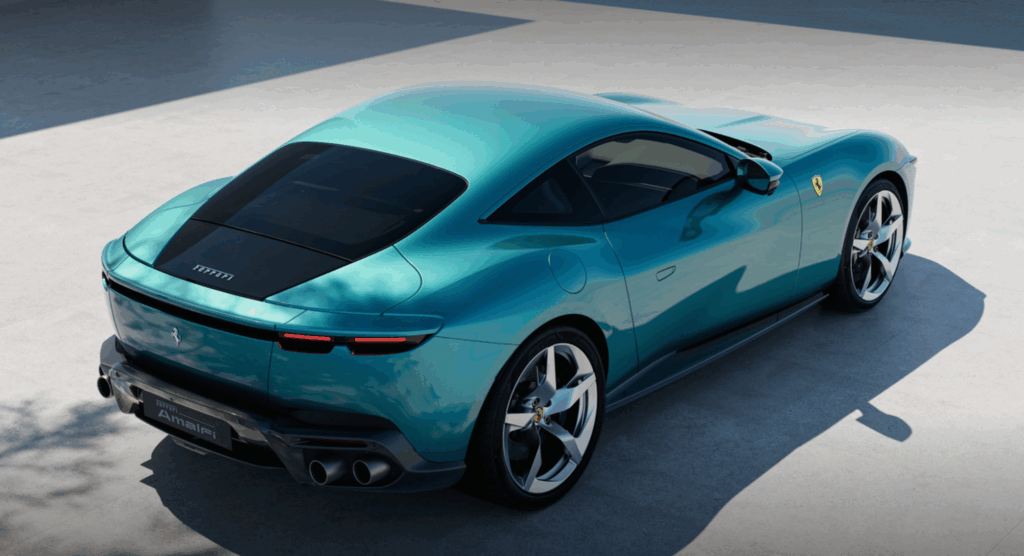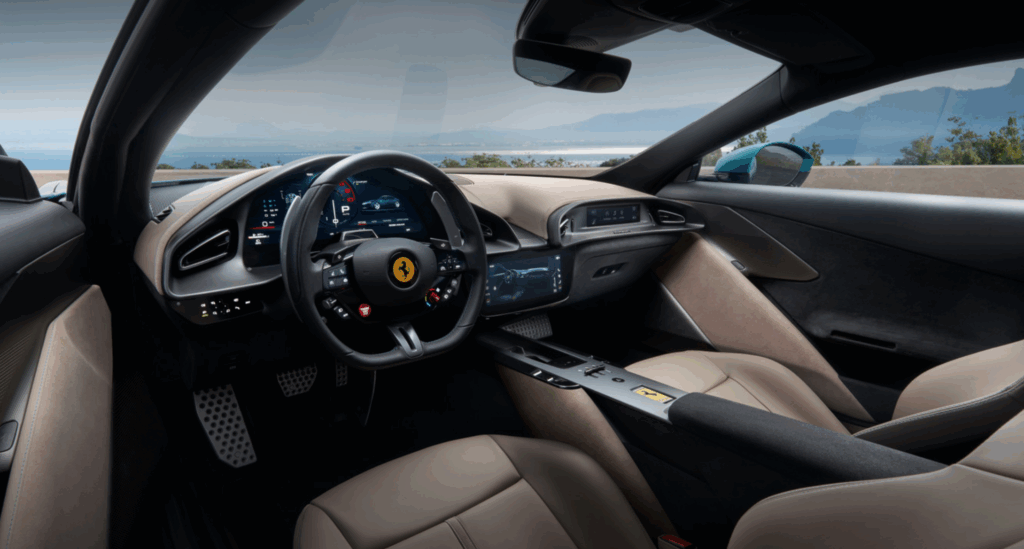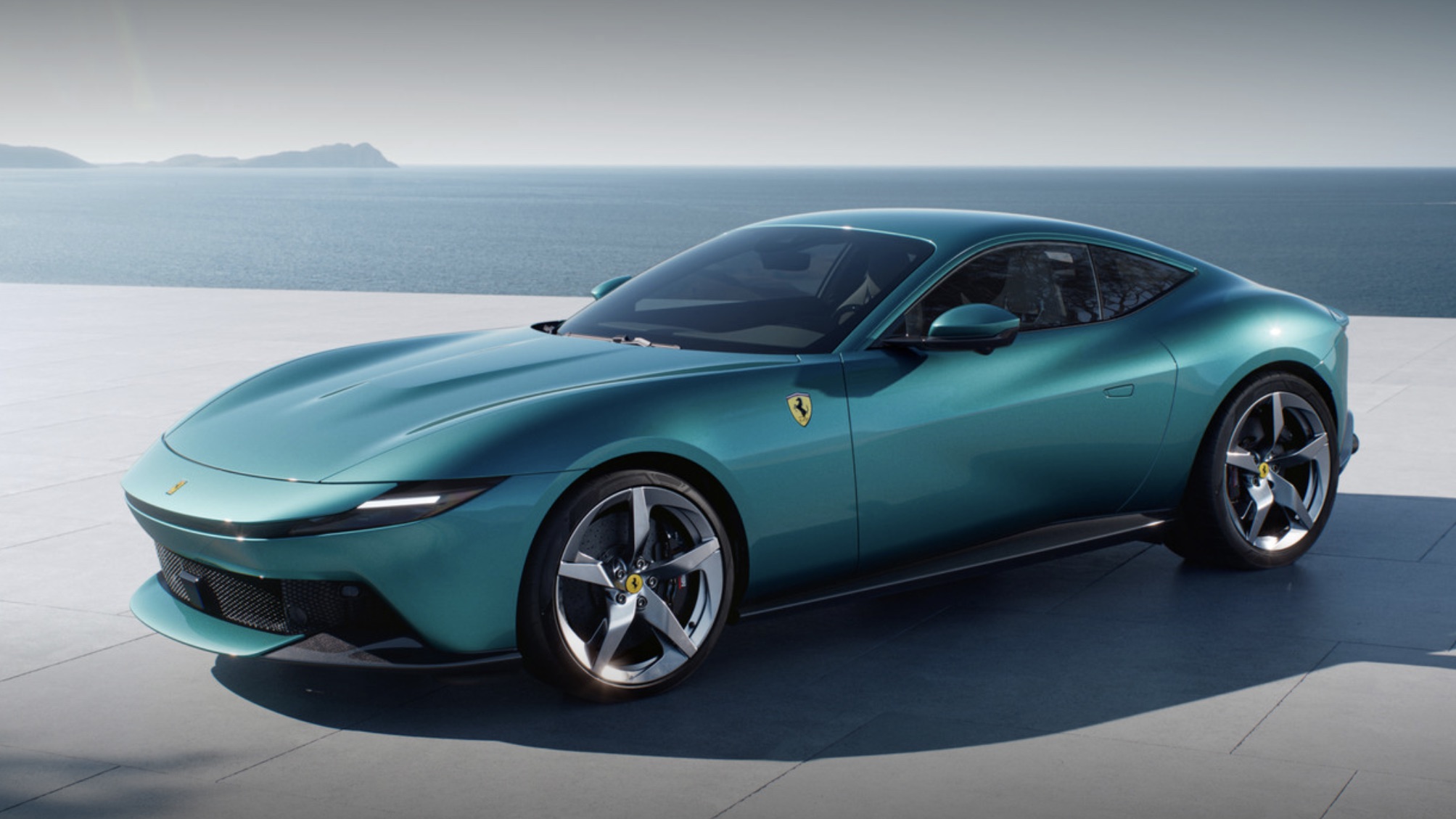The Ferrari Roma is officially retired. Enter the Ferrari Amalfi — the supposed next chapter in Ferrari’s sleek Grand Tourer saga. But is this really a bold new dawn for Maranello, or just a gentle remix of a winning formula with a new name stuck on the boot?
Replacing the Roma was never going to be easy. Praised for its restrained beauty and subtle Italian flair, the Roma carved a space in Ferrari’s line-up that blended elegance with just enough aggression. So naturally, Ferrari decided to play it safe with the Amalfi — perhaps too safe.
Same silhouette, new name
At first glance, the Amalfi could pass for a Roma with a new badge. The retractable door handles, sleek mirrors, and overall profile are all strikingly similar. Even the dimensions barely move — it’s the same 4.66 metres long and 1.30 metres high, with just a whisper of added width. It’s evolution, not revolution — or in less generous terms, more of a facelift than a fresh start.
Ferrari has tidied up a few details, though. Up front, the distinctive Roma grille is gone, replaced by a wide, airy bumper and a thin black strip connecting the headlights — a subtle nod to the 12Cilindri’s more muscular face. Around the back, four taillights remain, though the rear design feels slightly smoothed out, with reshuffled badging on a gloss black panel. It’s all very polished, but whether it truly turns heads like the Roma did is up for debate.

Performance that’s… familiar
Under the bonnet, things stay reassuringly predictable. The 3.9-litre twin-turbo V8 carries over, now producing 640 horsepower — a modest 20hp gain over the Roma. The 0-100km/h sprint improves by a barely noticeable 0.1 seconds, clocking in at 3.3 seconds. Top speed? A respectable 320km/h.
While the engineers have made minor refinements — improved cooling, subtle weight savings, quicker gear changes — there’s no hybrid system or electrified twist to keep pace with rivals embracing modern tech. It’s pure petrol power, which will delight the purists but might leave others wondering if Ferrari’s playing it a little too safe in 2025.
Step inside, and the Amalfi’s cabin is as refined and luxurious as you’d expect. Tech from the 12Cilindri makes an appearance, with a 15.6-inch digital display, floating passenger screen, and an awkwardly low-set central touchscreen that looks better than it feels to use. The rear seats are best treated as additional luggage space, unless your passengers are either under 10 or particularly flexible.

No official price tag yet, but with Ferrari’s GT history and exclusivity baked in, expect a hefty six-figure sum — and that’s before you dive into the near-endless customisation options.
In short, the Ferrari Amalfi delivers beauty, performance and refinement — but it does so by leaning heavily on its predecessor’s playbook. For some, that quiet evolution will be enough. For others craving innovation, the Amalfi might feel like Maranello resting on its laurels.
